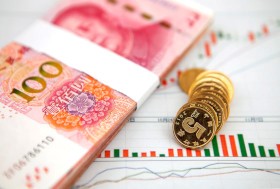The Chinese yuan is edging higher midweek after the federal government announced that it would be slapping anti-dumping duties on steel imports from major regional trading partners. This might be part of the nationâs strategy of âarduous effortsâ to match this yearâs industrial output growth target, particularly as protectionism and trade wars apply pressure on exports and affect the world’s second-largest economy.
Recently, the Ministry of Commerce confirmed that it would be imposing duties, ranging from 18.1% to 103.1%, on all stainless-steel billets and hot-rolled stainless-steel plates beginning on Tuesday. The new policy targets imports from the European Union, Japan, South Korea, and Indonesia.
All 28 eurozone markets will face a 43% tariff, Japanese exporters will be subject to a 29% tax, South Korea will be hit with a 103.1% levy, and Indonesia will be contending with a 20.2% duty.
Dumping is when an imported product is sold at a cost lower than what is typically charged in the domestic market. China is currently the worldâs biggest steel producer and exporter, exporting 67 million metric tonnes of steel, which was down 9% from the previous year.
The ministry said dumping has damaged the nationâs industry.
Dumping from the EU, Japan, Korea, and Indonesia has caused substantial damages to the Chinese domestic stainless steel billet and hot-rolled stainless steel plate industry.â
China recently initiated a plan to boost industrial output after production levels slumped to a 17-year low of 5% in May, though growth rebounded 6.3% in June. The Industry Ministry stated that âarduous effortsâ are necessary to meet this yearâs target of between 6% and 6.5%, prompting the government to initiate stimulus activities to facilitate advancement.
As the US-China trade war lingers, many domestic and foreign manufacturers have left the country, fleeing to neighboring markets, including Malaysia, Thailand, and Vietnam. Although this has been heading in this direction, these businesses have only accounted for less than 2% of capacity.
Despite the government and the Peopleâs Bank of China (PBOC) decreasing the reserve requirement ratio to spur lending, many small- and mid-size banks have been unwilling to lend to borrowers, reports Reuters. This has resulted in many firms struggling to keep up with their bills and a growing number of manufacturers delaying orders and slashing payrolls.
Li Jiajun, the chief financial officer at Guangdong LiShun Yuan Intelligent Automation Co., told the newswire:
These days the most discussed topic — something that we always talk about in meetings — is whether we should move to Vietnam. Many of my clients have moved there.
Government policy and implementation on the ground are still somehow disconnected. Itâs not so easy — at least, I havenât enjoyed much benefits so far.
But Beijing has started to take action. In March, the government announced nearly $300 billion in across-the-board tax cuts to support business and enhance consumer demand. Many economists agree that this will offset some of the damage from the trade spat with the US, but it might not be enough after the International Monetary Fund (IMF) warned that the dispute is impacting Beijing more than Washington.
The USD/CNY currency pair dipped 0.08% to 6.8740, from an opening of 6.8793, at 13:02 GMT on Wednesday. The EUR/CNY slipped 0.12% to 7.6594, from an opening of 7.6687.
If you have any questions, comments, or opinions regarding the Chinese Yuan, feel free to post them using the commentary form below.
